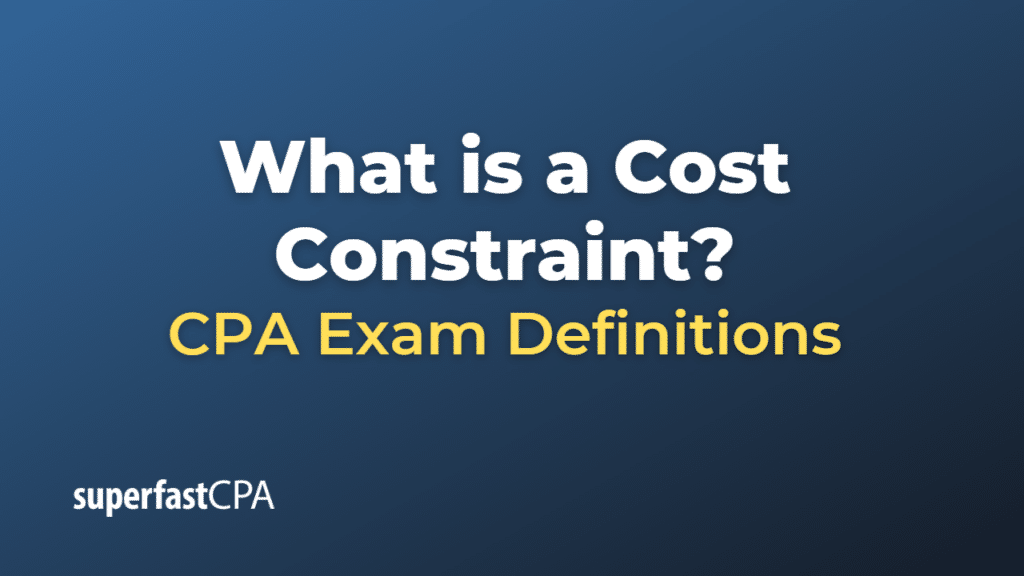Cost Constraint
A cost constraint is a limitation or restriction on the amount of resources, such as money, time, or materials, that can be spent on a specific project, activity, or decision. Cost constraints are a common consideration in business decision-making and project management, as organizations often face limited resources and need to prioritize their spending and resource allocation to achieve their goals most effectively.
Cost constraints can arise from various factors, including budget limitations, cash flow restrictions, resource scarcity, or regulatory requirements. They can influence an organization’s decision-making process and force trade-offs between different courses of action, quality levels, or resource allocation.
Organizations need to identify and manage cost constraints to make informed decisions, optimize resource allocation, and maximize their return on investment. Effective cost constraint management may involve prioritizing projects or activities with the highest potential return, identifying cost-saving opportunities, and reallocating resources from less critical or less profitable activities to those that offer greater value or potential growth.
In summary, a cost constraint is a limitation on available resources that organizations must consider and manage to make effective decisions, allocate resources efficiently, and achieve their financial and operational goals.
Example of a Cost Constraint
Let’s consider a fictional software development company called “CodeMaster Solutions” that offers web and mobile application development services. The company has several ongoing projects with different clients and a limited budget and workforce to allocate to these projects.
One of CodeMaster’s clients, “TravelWorld Inc.,” requests significant additional features for a mobile app that the company is developing for them. The project’s initial budget and timeline did not account for these additional features, and implementing them would require extra resources.
In this scenario, the cost constraint is the limited budget and workforce available to CodeMaster Solutions for the additional features requested by TravelWorld Inc. To manage this cost constraint, CodeMaster needs to evaluate the available options and make informed decisions. Some possible courses of action include:
- Negotiating with TravelWorld Inc. to revise the project budget to accommodate the additional features, which could provide extra resources to cover the increased costs.
- Evaluating the priority of ongoing projects and reallocating resources from lower-priority projects to accommodate the additional features for TravelWorld’s app, ensuring the most effective use of the available workforce and budget.
- Assessing the feasibility of implementing the additional features within the current budget by finding cost-saving measures, such as using more efficient development techniques or leveraging existing software components to reduce development time and costs.
- Discussing with TravelWorld Inc. the possibility of phasing the implementation of additional features, starting with the most critical ones and implementing the rest in later phases, spreading the costs over an extended period and easing the budget constraint.
By carefully considering the cost constraint and exploring different options, CodeMaster Solutions can make an informed decision that optimizes resource allocation, satisfies the client’s requirements, and maintains the company’s financial health.













